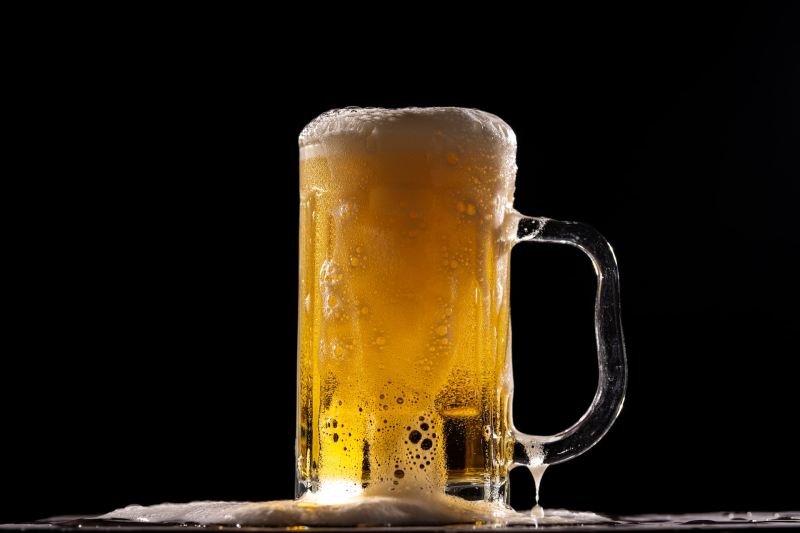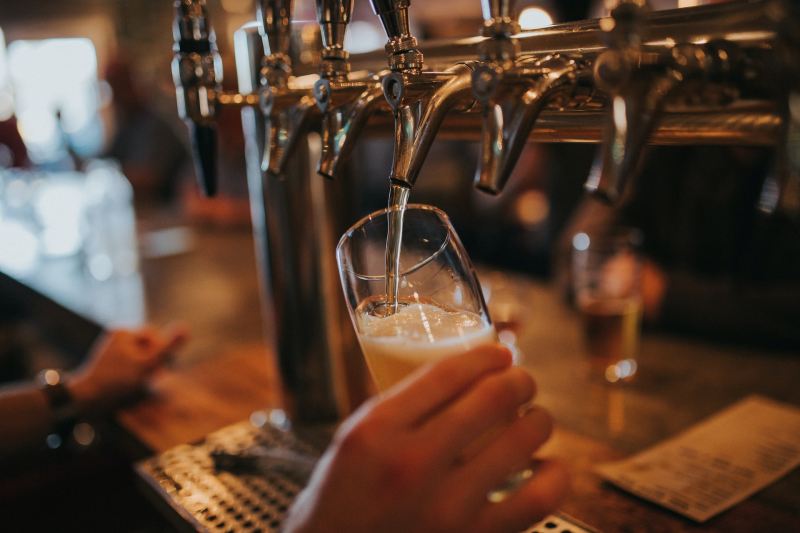
Even if you have only the most basic knowledge of beer, you probably know the simple ingredients that you need to have to brew it (even if you’ll never brew any yourself). They are grain (barley, corn, rice, etc.), yeast, hops, and water. If you enjoy drinking beer and like talking about it with any authority, it’s a good idea to have this kind of base information because beer gets more complicated after this.
There are countless styles and offshoots, including IPAs, stouts, sour ales, barleywines, and everything in between. Including well-known beer styles and their various offshoots, there are currently more than 100 defined types of beer. And while we could spend a dozen (or more) articles explaining all the styles (don’t tempt us), today, we’re most interested in sticking with the basics—specifically, the age-old questions of the differences between lagers and ales.
You’ve probably randomly seen these terms associated with your favorite beer and maybe never even wondered why. But there’s also a good chance that even if you planned to look up the difference between the two, you forgot about doing it after you went down a Wikipedia beer wormhole or were too lazy to Google it. Either way, today we’re going to take a deep dive into the two, and you’ll learn once and for all why your favorite beer is labeled as a “lager” or as an “ale.” And no, it’s not just a brewer randomly picking one or the other.

It all starts with yeast
Brewers don’t just label their beers randomly. There really are rules, parameters, and techniques involved. The simplest way to differentiate between lagers and ales is that they’re made with different types of yeast. If you only learn that today, you have at least a tiny bit of information to share when you’d rather not talk about the weather during your next “small talk” occasion at work or a social gathering. It might not entertain the masses like some tail of catching a “fish as big as a man” at a generic name lake, but at least you won’t have to talk about how unseasonably cool the weather has been lately or some nonsense like that.

What kind of yeast is used?
If you want to be able to answer a follow-up question, you might want to keep reading. In the most basic terms, ales are made with top-fermenting yeast at a warm temperature, and lagers are made with bottom-fermenting yeast at colder temperatures. Due to the warmer temperature, ales take much less time to ferment than their lager counterparts. They ferment in as little as three weeks, while lagers take anywhere between six to eight weeks or longer.

The first lager
Ales are much older than lagers. Even though Bavarian monks were “lagering” beers in cellars and caves centuries before, the first well-known lager was a pilsner you might be aware of. When Pilsner Urquell was brewed for the first time in 1842 in Czechia, the world was introduced to the pale lager. Most of the beer before this was ale since cold fermentation wasn’t possible for many brewers, and the use of yeast wasn’t yet commonplace. This is why Germany’s purity law (Reinheitsgebot) originally only included water, barley, and hops.

Cold conditioning
While most ales don’t, many lagers undergo a phase in the brewing process called cold conditioning. This traditional form of lagering consists of moving the beer to cold lagering tanks with active yeast and fermentable sugars. This lets the yeast to help smooth out the beer’s flavor and give it the clear, not-cloudy, amber color lager drinkers expect.

It’s all about the esters
When it comes to flavor differences, most drinkers will have a difficult time differentiating between ales and lagers after a few sips. This is because they essentially taste the same. The difference lies in the esters. Due to warm fermentation, the ale has more esters than the lager. While there are different types of esters, in general, they’re known for their fruity aromas and flavors. Some of the most common ester flavors include pears and bananas.

Notable ales
When it comes to ales (at least in the US), the IPA seems to get all the press. Also known as the India Pale Ale (this includes West Coast IPAs, double IPAs, New England-style IPAs, and others), some of the most well-known beers under this umbrella are Stone IPA, Lagunitas

Notable lagers
When it comes to lagers, there are few more well-known than Budweiser, Corona, and Pilsner Urquell. The lager umbrella includes classic lagers (like Narragansett lager), pilsners (like the aforementioned Pilsner Urquell and Rothaus Pils Tannenzäpfle), Helles lagers (like Weihenstephaner Origina), Mexican lagers (like Modelo Especial), Kölsch-style beers (like Gaffel Kölsch), Vienna lagers (like von Trapp Vienna-style Lager), and more.



